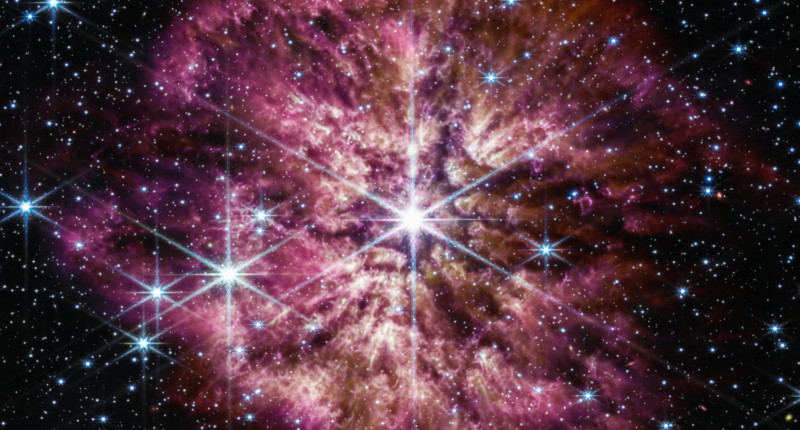NASA’S James Webb Space Telescope has revealed a stunning image of a dying star 15,000 light years away.
It’s a rare sight, and a glimpse into how humans came to be in the universe.
The star is around 30 times the mass of the Sun, and has shed enough material in its explosive demise to forge 10 Suns.
It’s a Wolf-Rayet star, known as WR 124, which is one of the brightest, biggest and briefly detectable stars known to mankind.
Wolf-Rayet stars are in the process of expelling their outer layers, which is what creates its surrounding halos of gas and dust.
The image was captured by the $10billion James Webb SpaceTelescope, which was flung into space on Christmas Day in 2021.


Nasa released the picture at the South by Southwest conference in Austin, Texas on Tuesday.
“What we’re seeing in this beautiful new image at the very centre is a star,” said NASA astrophysicist Amber Straughn.
“The light from that star has been travelling through space for about 15,000 years, it’s 15,000 light years away, until it hit the detectors on the telescope.
“And the material that you’re seeing around the central star that looks like dust is dust.
Most read in Tech
“And so at the end of a star’s life, they shed their outer material, their outer layers out into the rest of the universe.”
This dust is integral to the workings of the universe.
It shelters young stars which are just forming and can act as the early building blocks for planets.
But star dust also serves as a platform for molecules to clump together – which is essentially how life came to be on Earth.
“I think this is one of the most beautiful concepts in all of astronomy. This is Carl Sagan’s Stardust concept,” Straughn continued.
“The fact that the iron in your blood and the calcium in your bones was literally forged inside of a star that exploded billions of years ago.
“And that’s what we’re seeing in this new image. That dust is spreading out into the cosmos and will eventually create planets. And this is how we got here, in fact.”
Best Phone and Gadget tips and hacks

Looking for tips and hacks for your phone? Want to find those secret features within social media apps? We have you covered…
We pay for your stories! Do you have a story for The Sun Online Tech & Science team? Email us at [email protected]









